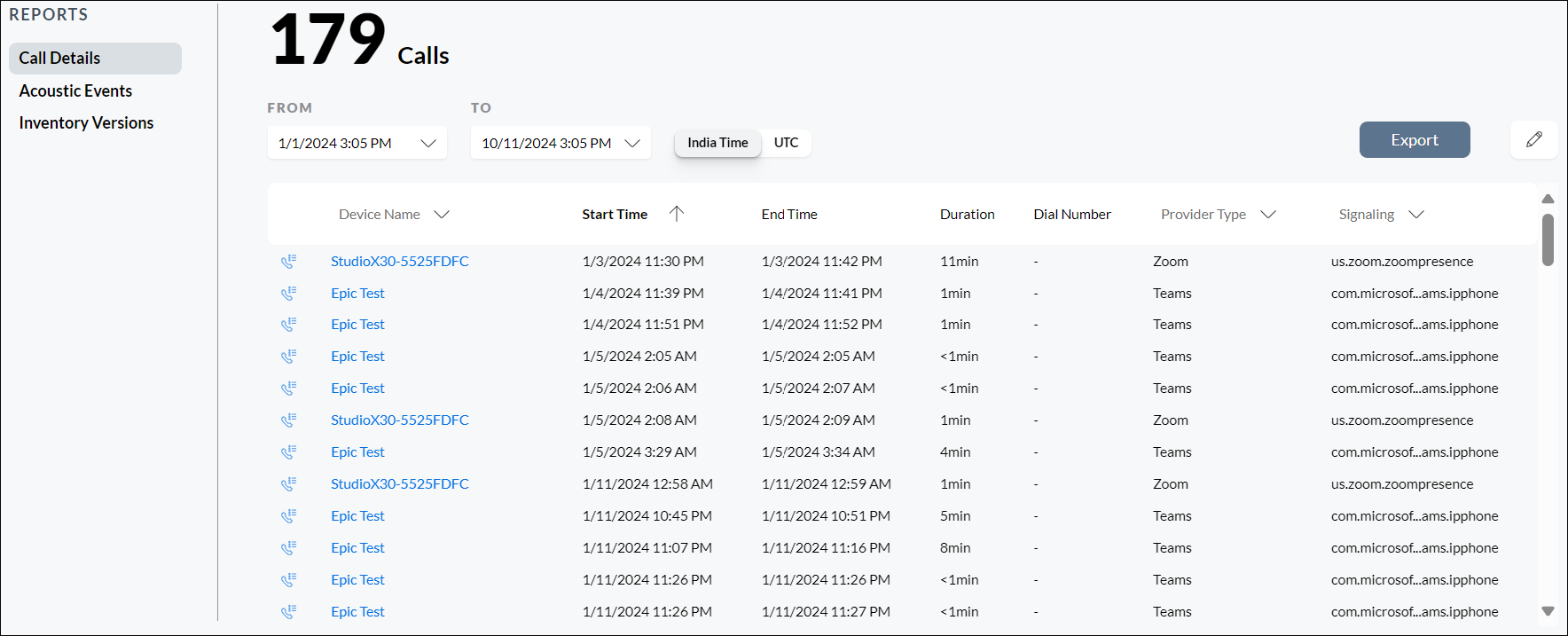Poly Lens Quick Start Guide - Video Devices
For Devices such as Poly Studio X30, Poly Studio X52, and Poly Studio G62, and others.
Introduction
Welcome to Poly Lens cloud. Poly Lens is a device management platform that simplifies the deployment, maintenance, and monitoring of your Poly devices while also enabling you to measure the performance of your Poly device portfolio. This quick start guide is designed to help you get going with your Poly video collaboration devices with Lens in a step-by-step manner.
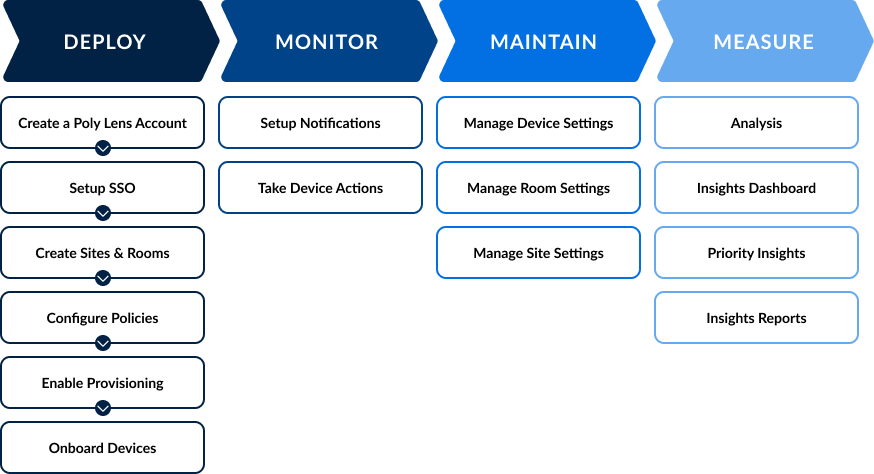
Deploy your Devices
Create a Poly Lens Account
To create your Poly Lens Account see https://lens.poly.com/. You can sign up using your existing Microsoft, Google, or Apple account, or create a new account with your email and password. After signing up, you'll receive a welcome email with instructions – just select Get Started. Enter a name for your account, select Continue, and voila, your Poly Lens Account is created.
For more details, see Create an Account.
Set-Up SSO
Poly Lens cloud supports the following SSO providers:
- Microsoft
- Apple
Permissions Needed for Microsoft SSO
Microsoft Single Sign On (SSO) is used to grant permission for Poly Lens to access various portions of an Office 365 tenant. To enable Microsoft Single Sign On (SSO) in Poly Lens, you need to grant the following permissions through your Office 365 tenant:
- Sign you in and read your profile: Allows the app to sign you in and read your profile and basic company information.
- Maintain access to data you have given it access to: Allows the app to update the data even when not in use, without additional permissions. Note: Admin access needed on Microsoft side to accept Poly Lens on behalf of organization For more details, see Permissions.
Create a Structure for Your Device Portfolio
Before you onboard your Device(s) into Poly Lens, we recommend creating a systematic structure for your Account by creating Sites and Rooms, and by defining a consistent and easy-to-understand naming convention to name Sites, Rooms and Devices across your organization.
Having the same naming convention across your organization will not only simplify Device management but will also make it easier to leverage Analytics. Consider a scenario where you want to review Room Utilization trends using the Insights Dashboard. The Insights Dashboard allows you to drill down into granular levels starting from the overall portfolio level. If your Site and Room names reflect your physical footprint, you can effortlessly drill down to any Site, Room, or Device Group of interest.
Pro Tip: There’s no “one right way” to structure your Account. However, we’ve seen the most success when an Account mirrors a company’s physical footprint. For example, if you have offices in multiple geographic regions, your Site naming convention could be:
Two-letter Country Code-Three-letter City Code-Building Abbreviation, i.e., US-NYC-SOHO
Create Sites
A Site is a virtual representation of an office building or Site in your organization. It could represent a single building, multiple floors in a building, a group of buildings in the same office compound, etc. You can create Sites based on your business needs. In Poly Lens, a Site has many Rooms.
Create Rooms
A Room is a virtual representation of a physical meeting Room or space. It lets you view all devices in a Room from a single place within Poly Lens. In Lens, a Room has many Devices. For example, a mid-size meeting Room could have a Poly Studio X52, a TC10 and a Trio C60.
After you onboard the Devices (explained later), you’ll need to associate them with respective Rooms in Poly Lens.
Pro Tip: Assigning a Room name is the minimum requirement for Room creation. However, within the Room’s settings, you’ll find several additional fields: Site, Room Size, Floor Name, Capacity, Calendar Resource, and Time Zone. While these fields are not required to create the Room, they are very useful for reporting and analytics. Filling in these details during the Account structuring phase will save you time in the long run, while providing the most accurate Room usage data. Here is an example: If you specify Room Capacity, the Room Utilization chart in the Analysis tab will contrast Room Occupancy during meetings against the intended Room Capacity.
Configure Poly Lens Policies
Policies allow you to create and apply Device configurations across multiple layers. Each policy type has a specific priority level, which impacts how the device Inherits the configuration parameters (AKA Settings). Settings at a Policy layer of higher priority will take precedence over settings set at a lower priority. This means that Settings in an Account level policy will get overruled if the same Settings are applied at the Device Group, Site, or Individual Device Policy levels.
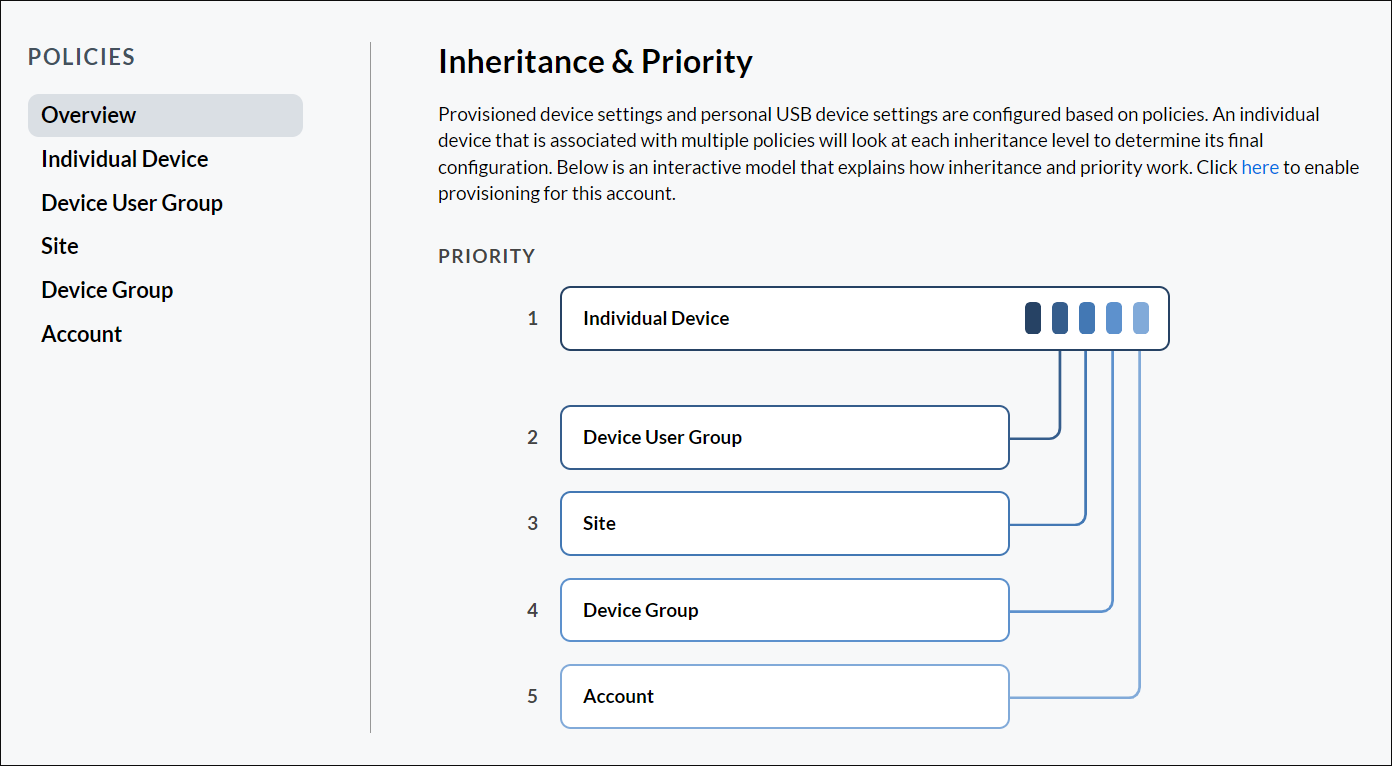
Pro Tip: We recommend that you set up preliminary Policies before onboarding your Devices so that they align with your specific usage preferences. If, however, you choose not to set Policies at this point, Poly Lens will assign default values to certain parameters such as Software Update, Device Polling Interval, etc.
Policies at the following levels (listed in the order of the highest priority first) are the most relevant for managing video collaboration devices such as Studio X30 and Studio X52, and others:
Setting Policies for Individual Devices
Individual Device settings are configurations that apply to a single Device. Device-level settings will override those in other Policy layers. For instance, if there is a software version policy at the Account level, but you want to test a different version on a specific Device, the version specified at Device Policy level will take priority. We recommend you use this only for a small subset of configuration settings that are unique to a Device. Settings such as Device Name and Registration Credentials to a SIP Server, are a good fit for this layer of Policy.
You can set individual Device Policies after Onboarding your device(s).
For more information, see Policy by Individual Device.
Setting Policies for Sites
A Site Policy enables you to manage some or all Devices at a particular Site (location). Site Policy settings include time zone, language, scheduled device reboot, and building - or campus-specific background customizations, etc.
For more details, see Policy by Site.
Pro Tip: Poly Lens allows you to define public and private IP subnet ranges for a Site. Once defined, any Device onboarded with an IP address within these ranges will automatically be associated with the Site.
For more details, see Device Site Association with a Subnet Range.
Setting Policies for Device Groups
In Poly Lens, you can group Devices according to your unique business needs and use cases. Device Group policies apply to the Device Groups you’ve created.
A typical example is creating a Device Group dedicated to testing. Say this Device Group is named "Software Testing". You can set the Device Group Policy for the "Software Testing" Device Group to automatically install the latest Device software as soon as it is available.
Here are a few other examples:
- Group of Devices in Teams mode
- Group of Devices to be transitioned from Teams to Zoom or vice versa
- Devices with Group Framing and People Tracking turned on
For more details, see Policy by Device Group.
Setting Policies for Your Poly Lens Account
Account Policy enables you to apply configurations to all Devices connected to your Poly Lens Account. Some Policies you can set at this level include time zone, software updates, etc.
For more details, see Policy by Account.
A Note about Device Model and Device Families
Within Sites, Device Groups or Account, an additional layer of classification can be used for creating a Policy.
- Device Families: Creates a superset of configuration that apply to all Device Models within the family.
- Device Models: Applies configuration to a specific Device Model.
Enable Device Provisioning in Poly Lens
Device Provisioning allows you to onboard and provision your Video Devices. Once provisioned the Device will show up in your Inventory and its configuration will be modified to enable Poly Lens management and Insights. This is important as it’ll enable you to use Poly Lens to configure Device settings and apply Policies for the Device. Enabling Provisioning is simple, all you need to do is select a server name and set the password.
For more details, see Device Provisioning on an Account.
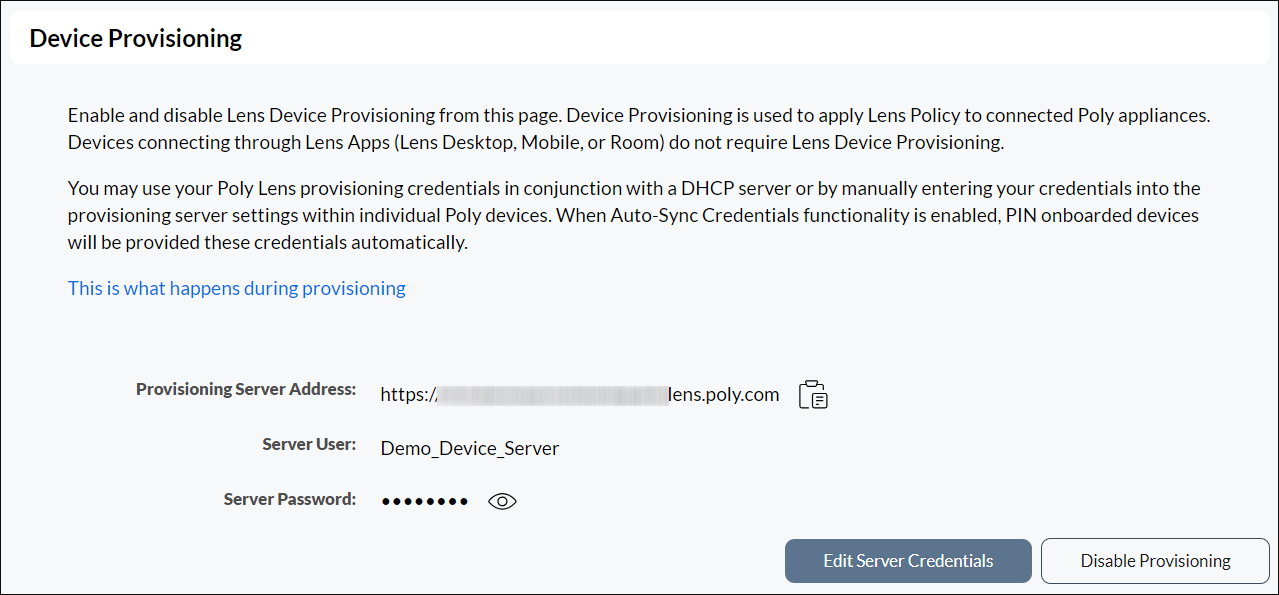
Onboard Your Devices
Provisioning Based (Recommended)
This is the best way to Onboard Devices in large numbers. Once you’ve enabled provisioning in Poly Lens, you can use DHCP to automatically Register your Video Devices to a provisioning server, before initial system setup after unboxing, or after a system reset. You just need to provide the following information to the Poly Lens Account DHCP owner:
- DHCP Option Format: https://<ServerUser>:<Password>@<ProvisioningServerAddressURL>
- Your network environment will vary based on your deployment, however, the system looks for option number 160 and 66 (in that order) in the response received from the DHCP server.
For more details, see Provisioning Video Devices.
PIN/QR Code Onboarding
This is the quickest way to onboard a single device. Connect the device to a monitor and network. Once the device has gone through initial set-up, it’ll show a QR code. Scan the QR code with your mobile camera, see the website shown, enter device information, and click Register Device!
Note: Poly Lens Policies are not supported with devices Onboarded using Pin/QR code method. Devices Onboarded with this method need to be provisioned separately to your Poly Lens Account.
For more details, see PIN/QR Code for Video Devices.
Pro Tip: After Onboarding Devices, it is recommended to change the Device Name (according to your preferred naming convention) and allocate the Device to a Room.
Activate Poly+ Enterprise Licenses (Optional)
Now that you’ve Onboarded your Devices, you should activate your Poly+ Enterprise licenses to get the maximum benefit from Poly Lens. See Activate a License for the step-by-step process.
Note: The License Keys are delivered to your inbox from noreply@sentinelcloud.com. Please check your spam folder if you don’t find it in your inbox.
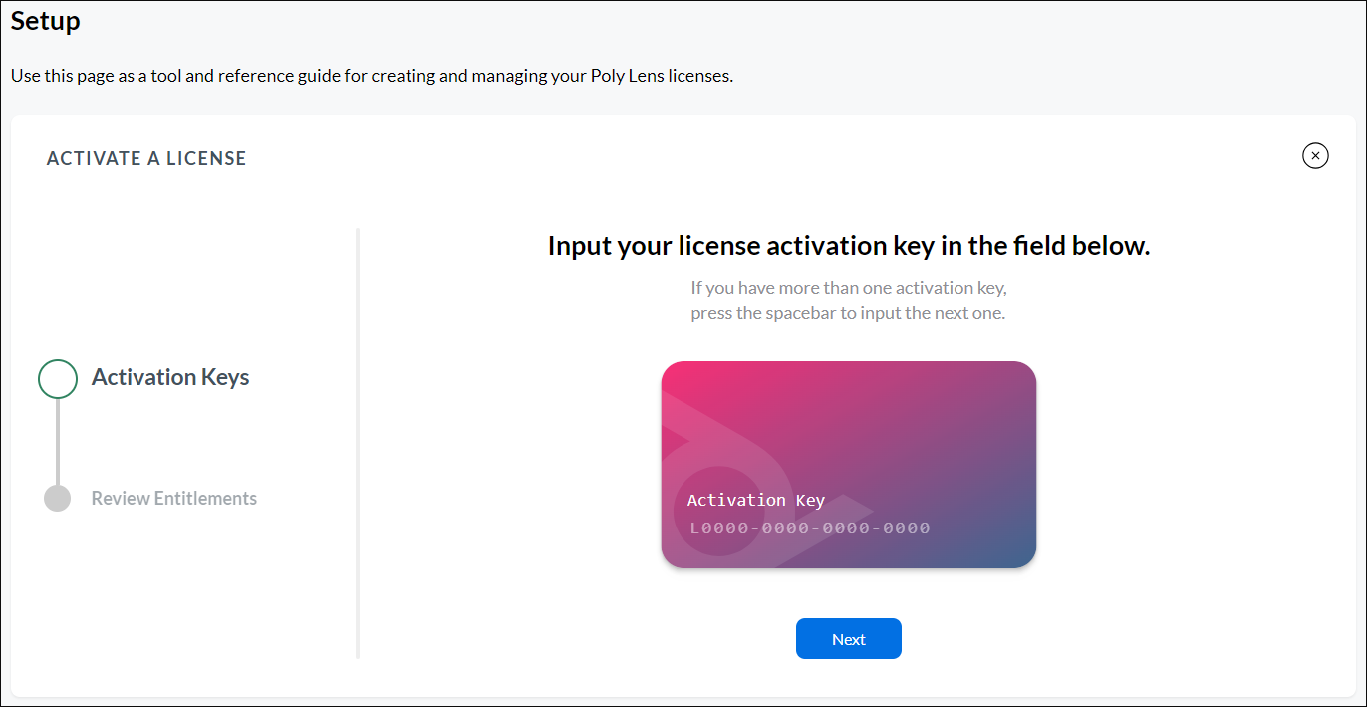
Monitor your Device Portfolio
Poly Lens has multiple time-saving features to streamline portfolio monitoring:
Device Actions
The Device Actions page allows you to quickly locate Devices or Sites that may require attention. For example, when a Device is Offline, or when a software update available. Here that information can be filtered, and Devices/Sites located quickly to resolve the issue.

Notification Center (Email Alerts and Integration with Third Party Apps)
The Notification Center allows an Admin or a Device Manager to enable and configure notifications for events on the Poly Lens service.
When the notification subscription is set up, the recipients on the list will receive notifications regarding events that have occurred, the product model, when the event was reported, and additional notes, if provided. Notifications can be sent from Poly Lens to the following:

Maintain your Device Portfolio
You can undertake maintenance of your Device portfolio at the Device, Site, or Account level.
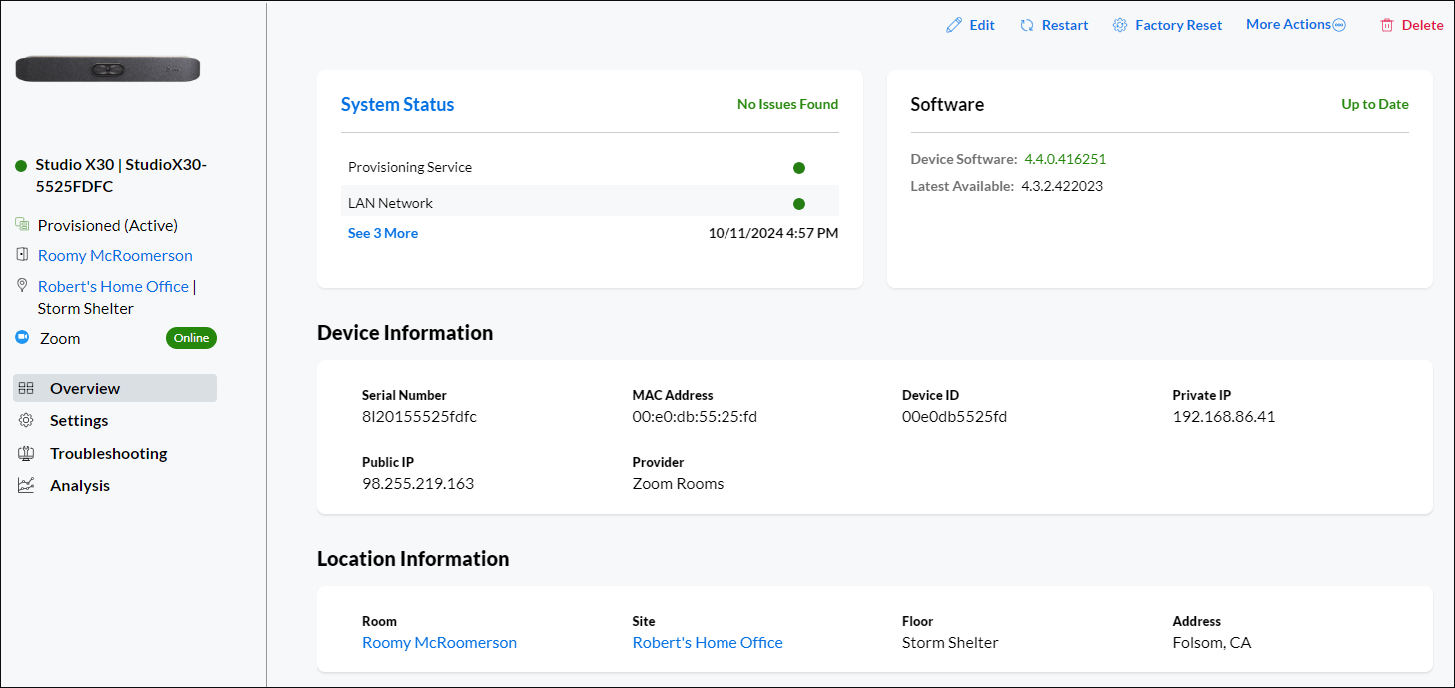
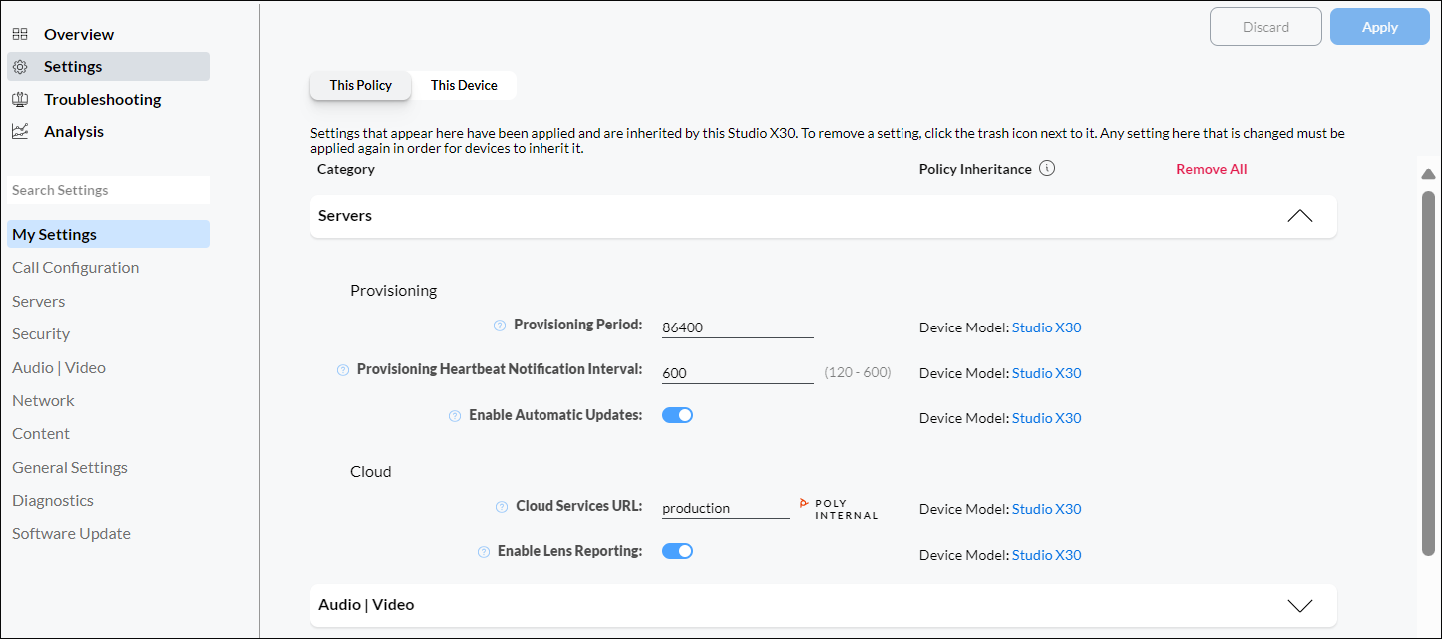
Device Settings
At this page, you can configure all the settings of an individual Device. Settings include everything from policy, call configuration, security, audio/video settings to diagnostics and software updates.
Room Settings
As the name suggests, here you can update your Room Settings such as room name, the Site the Room is associated with, etc. You can see the Devices in the Room and the connected status of the Devices.
Site Settings
Site settings allow you to view and change Site Settings such as Site name and location, and others. You can also specify IP ranges for auto device association with the Site.
Measure the Performance of your Device Portfolio
With the above steps done, you are now ready to measure the performance of your Device portfolio. For example, you can find out which sites have the highest meeting Room Utilization, or monitor the people count in Rooms during meetings, track ghost meetings, or see how often meetings run longer than scheduled, etc. Poly Lens has state-of-the-art analytics built right into it to help you do all this and more.
Analysis
Analysis is a group of health and utilization metrics available on the Analysis tab of any Device, Site or Room that you are managing. You can also create custom charts here. Note: Analysis for Rooms is a premium feature.
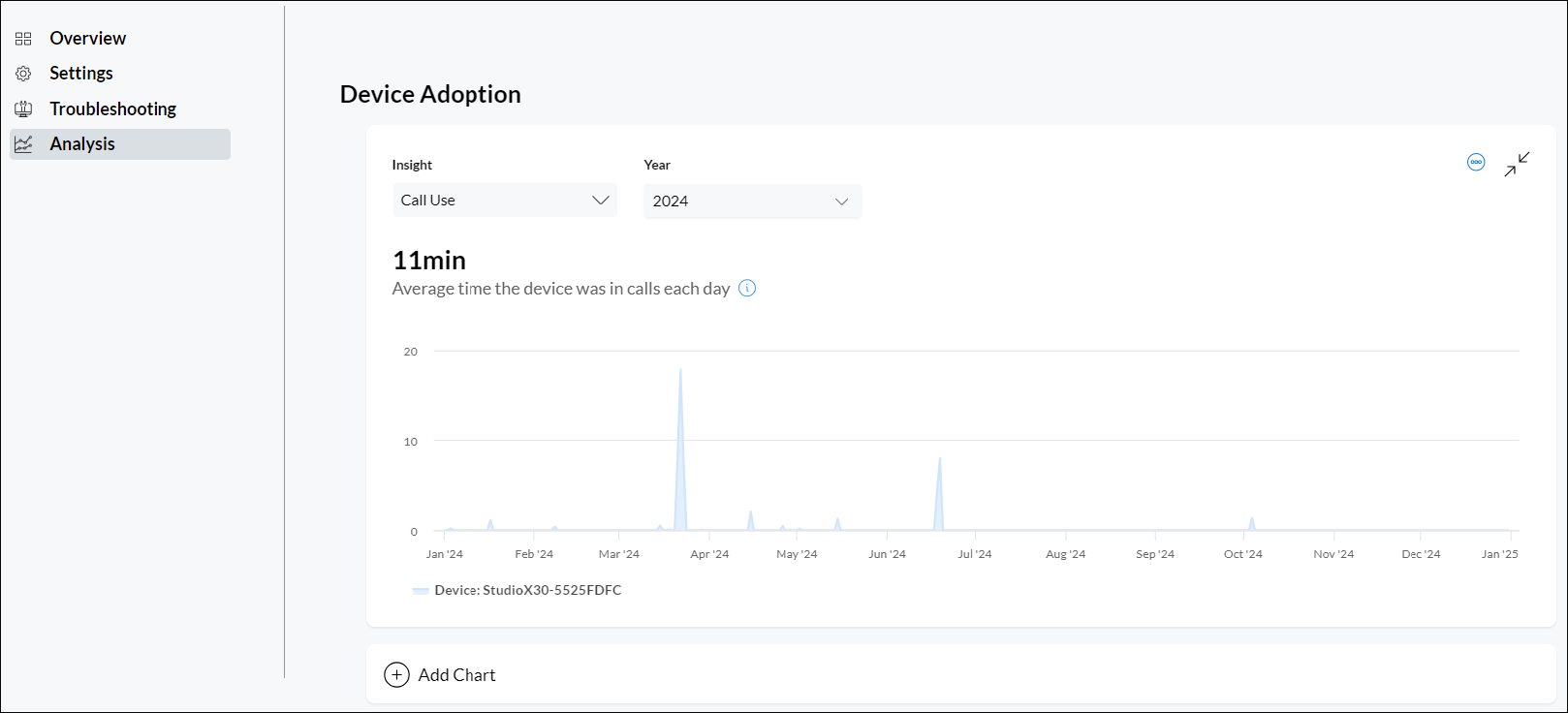
Insights
As the name suggests, Poly Lens Insights provide you actionable Insights into how your Device portfolio is performing and how it is being utilized.
Dashboard
The Lens Insights Dashboard provides a snapshot of your entire Inventory with focus on Device health and Device usage.
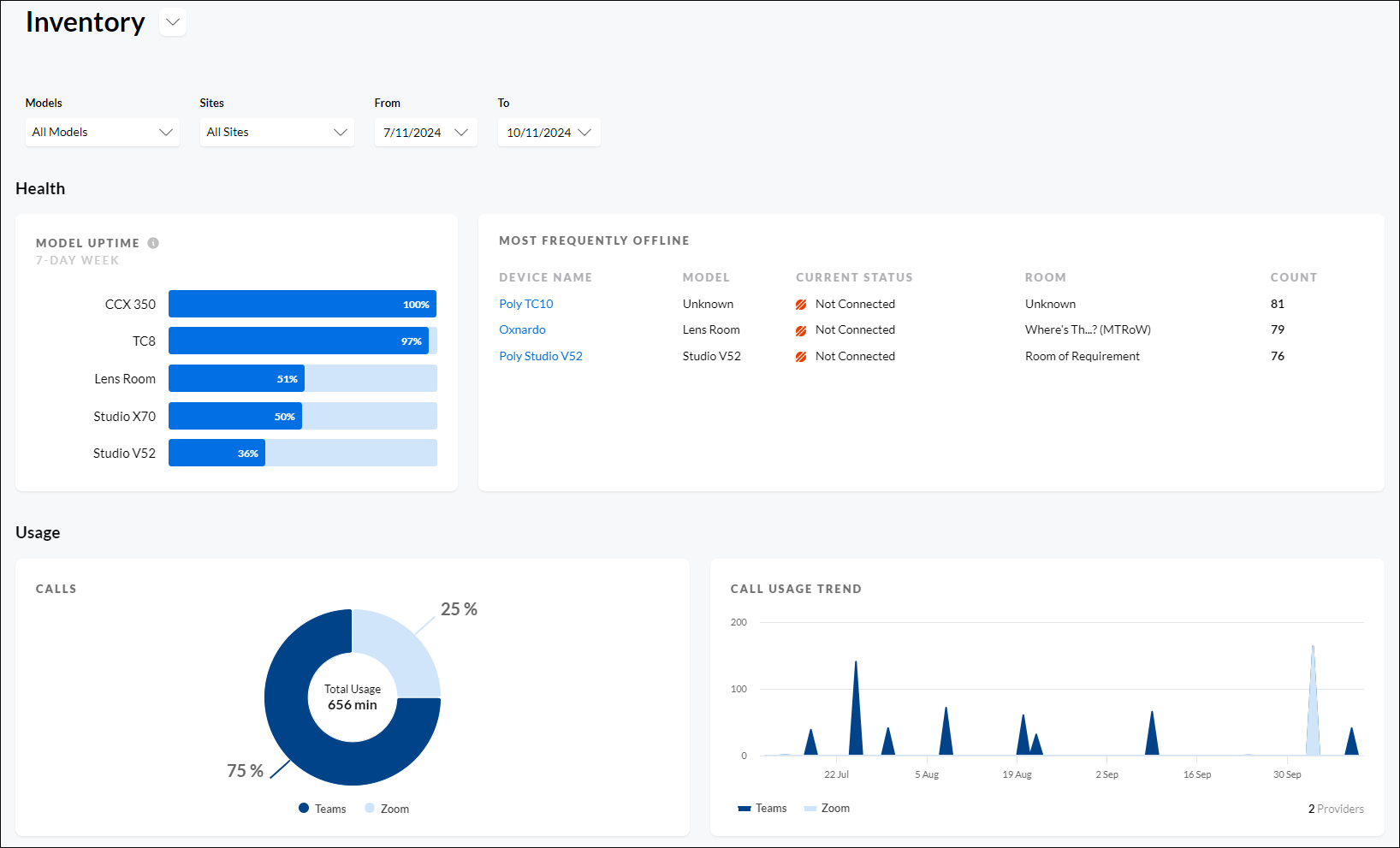
Priority
Priority Insights provide you the most important Insights into your portfolio including those that might need your attention. This enables you to quickly take necessary action without going through heaps of raw data.

Reports
Reports are predefined, specific data sets. There are three Reports available here:
- Call Details: Call Records
- Acoustic Events: Reports on Acoustic events recorded
- Inventory Versions: A snapshot of software versions across the Device portfolio
